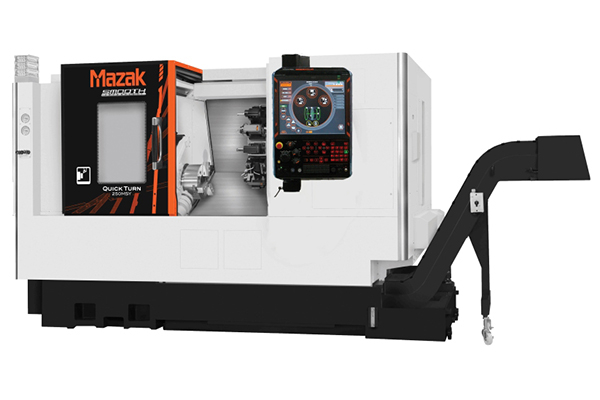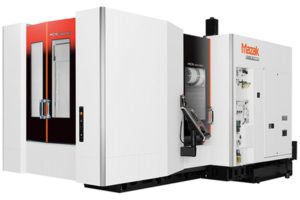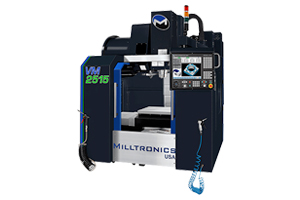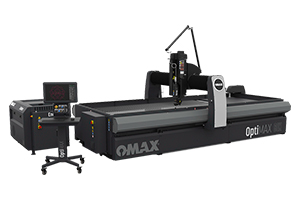In the fast-paced world of manufacturing, having a comprehensive understanding of the latest metal working machinery is crucial for any business looking to enhance productivity and precision. We are a top distributor of manufacturing technologies and focus on 11 types of metal working machinery for modern manufacturing. These tools are essential for manufacturing, from basic turning to advanced robotics. They are the foundation of innovation.
Metal Working Machinery Products at Smith Machinery
1. Turning Machines:
Turning machines, also known as lathes, are foundational in metal working machinery. These machines work by rotating the workpiece on its axis to perform various operations like cutting, knurling, and drilling. This process is essential for creating items such as screws, gun barrels, and cue sticks, making them a versatile and indispensable tool in the manufacturing sector.
2. Vertical Machining Centers (VMCs):
Vertical Machining Centers are characterized by the vertical orientation of their spindle, enabling them to perform cutting operations from above. They are particularly useful in complex milling operations. Their capabilities extend from basic drilling to intricate carving on metal surfaces, making them ideal for producing automotive parts, aerospace components, and more.
3. 5-Axis Machining Centers:
5-Axis Machining Centers represent a significant leap in technology, offering movement across five axes. This versatility allows for the creation of intricate and complex parts with high precision. Industries like aerospace, automotive, and medical benefit greatly from these machines, as they can create components with extremely tight tolerances.
4. Horizontal Machining Centers (HMCs):
Horizontal Machining Centers are known for their robust construction and horizontal spindle orientation. They excel in heavy-duty cutting operations and are often favored in large batch production. The design of HMCs facilitates better chip removal, leading to longer tool life and higher efficiency in operations like automotive engine block manufacturing.
5. Multi-Tasking Machines:
Multi-tasking machines are the epitome of efficiency in the manufacturing world. By combining operations like turning, milling, and sometimes additive manufacturing, these machines reduce the need for multiple setups and equipment. They are pivotal in reducing production time and enhancing the quality of complex components, such as those used in the aerospace and automotive industries.
6. Sawing Machinery:
Sawing machines play a critical role in the initial stages of manufacturing by cutting large metal pieces into manageable sizes. Their range includes simple hand-operated saws to sophisticated CNC-controlled machines, providing flexibility and precision in tasks ranging from basic cutting to intricate shaping.
7. Tool Room Mills:
Tool room mills are precision metal working machinery designed for intricate milling work. They excel in tool and die-making, prototype development, and small-scale production. With their high accuracy and surface finish capabilities, they are essential in industries where precision is paramount, such as medical device manufacturing.
8. Tool Room Lathes:
Tool room lathes, much like their mill counterparts, are designed for high precision. They are particularly useful in the manufacturing of complex rotational parts. These metal working machines are critical in industries requiring high-precision components, such as in the production of watch parts or micro-sized medical implants.
9. Grinding Machines:
Grinding machines are used for various finishing operations, ensuring high surface quality and dimensional accuracy. They are indispensable in the tool and die industry for sharpening cutting tools and in automotive manufacturing for producing high-precision gears and other components.
10. Waterjet Cutting Machines:
Waterjet cutting represents a precision-based, non-thermal cutting method. It uses a strong stream of water, sometimes with rough materials, to cut many different things. This technology is ideal for applications where thermal distortion is a concern, such as in the aerospace and electronics industries.
11. Additive and Robotics/Automation:
Additive manufacturing and robotics represent the future of manufacturing. 3D printing (additive manufacturing) allows for the creation of complex, custom designs with a level of flexibility traditional methods can’t match. Robotics and automation, meanwhile, enhance operational efficiency, consistency, and safety, revolutionizing industries like automotive and consumer electronics.
Conclusion
Each of these 11 types of metal working machinery plays a critical role in modern manufacturing. By integrating these technologies, manufacturers can achieve greater precision, efficiency, and innovation in their operations. Explore our extensive catalog to find the right metal working machinery solutions for your manufacturing needs, and stay ahead in the competitive world of modern manufacturing.
 Smith Machinery
Smith Machinery